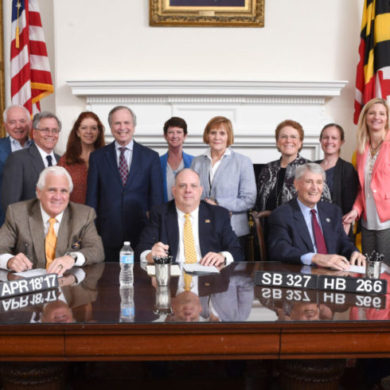Forward Thinker

Photo taken at the April 18, 2017 bill signing ceremony for Maryland House bill 266 / Senate bill 327 in the Maryland State House. Photo courtesy of the Executive Office of the Governor.
scholarship displacement
Definition
The National Scholarship Providers (NSPA) defines scholarship displacement as occurring when receipt of one form of financial aid, such as a private scholarship, results in a reduction in another form of financial aid, such as an institutional scholarship.
Problem Statement
Scholarship displacement penalizes students who have worked hard to apply for and earn a private scholarship. Displacement comes in different forms — scholarships, loans, and/or work-study can be displaced, or year to year displacement may occur after a college learns that a student has earned a renewable private scholarship.
the facts
the solutions
Advocacy is the answer! Through advocacy we can build awareness and create solutions. Michele encourages students to research the outside scholarship policy of any colleges they may apply to. She believes in
striving for win-win scenarios that benefit colleges and students. She is ready to help your organization help your students keep their private scholarships.
National Legislation
In 2021, Congressman Andy Kim introduced the first national scholarship displacement bill, “The Helping Students Plan for College Act”, focused on transparency and data collection. Michele is proud to partner with Zaniya Lewis of the YesSheCanCampaign as lead advocates for this bill.
Read more here.
paying for college
All too often cost is not a consideration when choosing a college. Students and parents look at the campus, the dorms, the dining hall, the rock-climbing wall, the majors, the location, and other considerations, but many never ask how much will it cost and how will we pay for it until the bill arrives. That is way too late! Cost must be a consideration from the start of the search!

the facts
The Solution
Information is the answer! Michele believes that financial education focused on paying for college will boost completion rates and lower student debt. She has developed new presentations on finding and funding college which can be customized for the unique needs of your organization and presented to your students.
